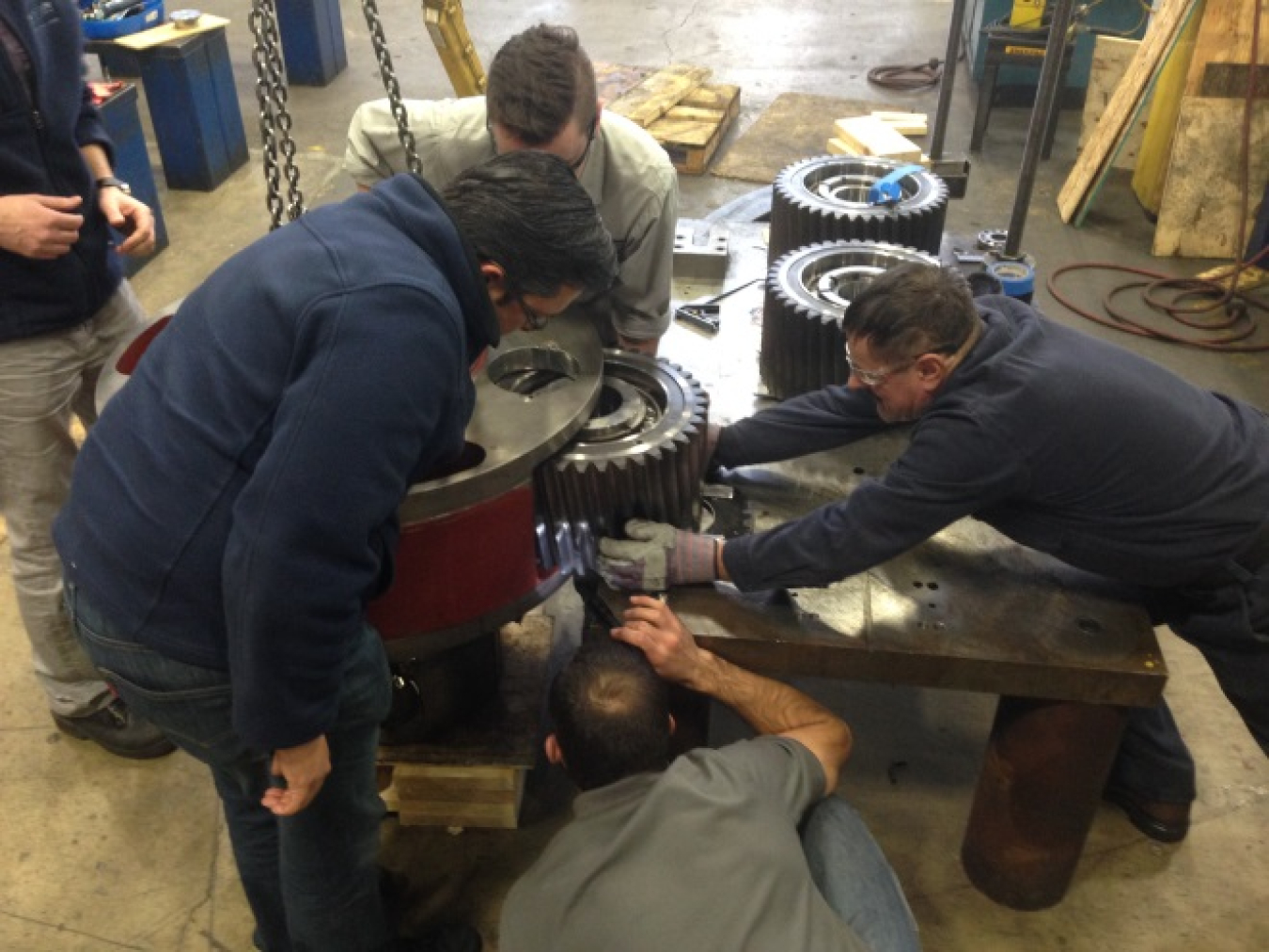The Gearbox Reliability Collaborative-developed Gearbox 3.
Wind Energy Technologies Office
May 17, 2017
The Gearbox Reliability Collaborative-developed Gearbox 3 was designed by Romax Technology, Powertrain Engineers, and The Timken Company and was manufactured and assembled by Brad Foote Gearing. Photo by Jonathan Keller, NREL 36525
The U.S. Department of Energy's National Renewable Energy Laboratory (NREL) has successfully demonstrated a new gearbox design developed by the Gearbox Reliability Collaborative (GRC), with a predicted lifetime 3.5 times greater than the previous, conventional design. NREL established the GRC in 2007 to address the failure of many wind turbine gearboxes in achieving their intended design life, despite meeting then-current design standards and third-party certification criteria.
The GRC analyzed the root causes of premature gearbox failures and confirmed that most of them were caused by an underestimation of loads and the absence of critical elements in the design process. The new gearbox design addresses the load issue, but the GRC has yet to address an unusual failure mode experienced by wind turbine gearboxes, called bearing axial (or “white etch”) cracking.
To address the gearbox loads, the GRC combined gearbox testing, modeling, and analysis of a 750-kilowatt drivetrain. The team built two gearboxes with conventional cylindrical roller bearings in their planetary section, and tests showed that rotor nontorque loads would not be shared effectively among the roller bearings, that high-torque conditions would reduce the fatigue life, and that skidding could occur in low-torque situations, potentially leading to premature bearing failure.
To address these issues, a new gearbox, called Gearbox 3, was designed using preloaded tapered roller bearings in the planetary section. The new gearbox design demonstrated improved planetary load-sharing characteristics in the presence of rotor pitch and yaw moments, resulting in a predicted gearbox lifetime that is 3.5 times greater than the previous, conventional design. See a report summarizing the work.
However, the GRC still needs to address the problem of bearing axial cracking. The inner ring of the bearing can suffer a crack that aligns with the axis of rotation of the shaft on which it is mounted. Such a crack can actually split the inner ring in two. The failure mode also happens in other industries, but much less often and with lower costs to replace, so in many design processes this potential failure is essentially ignored.
“We’re trying to understand why it occurs so frequently in wind as compared to other industries,” says Jonathan Keller, NREL’s principal investigator for the project. “So we’re leading the charge to understand this failure mode and design it out of the gearbox.”
The GRC brings together wind turbine manufacturers, owners, suppliers, researchers, and consultants to develop improved processes for the design, testing, and operation of wind turbines to increase gearbox reliability. The GRC includes major wind turbine manufacturers, including GE Renewable Energy, Siemens, and Vestas Wind Systems, as well as wind project developers such as MidAmerican Energy Company, Iberdrola, and NextEra Energy Resources. With the GRC nearing its tenth anniversary, wind farm operators report significant improvements in gearbox reliability, with the mean time between failures increasing from 5 years to 8–12 years.

